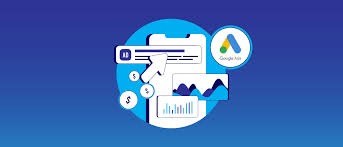Introduction
With more than eight billion searches processed every day, Google remains the starting point for most online journeys. That unrivaled reach makes its advertising platform a powerhouse for businesses eager to capture high‑intent prospects at the very moment they express need. By mastering Google Ads, marketers can place laser‑focused messages in front of ready‑to‑buy audiences, track every click‑to‑conversion step, and scale campaigns with granular budget control.
How the Google Ads Auction Works
At the core of every impression is a lightning‑fast auction triggered whenever a user submits a query or loads a page in the Google Display Network. Each advertiser enters a maximum bid, but money alone does not secure top placement. Google also calculates a Quality Score—a composite of expected click‑through rate, ad relevance, and landing‑page experience. The platform multiplies bid by Quality Score to determine Ad Rank. This blended approach rewards advertisers who serve helpful, relevant content, keeping user satisfaction high and average cost per click reasonable.
Campaign Types and Their Strategic Roles
- Search Campaigns – Text ads that appear above or below organic results. Ideal for capturing demand when customers actively look for specific products or services.
- Display Campaigns – Banner or responsive image ads across millions of partner sites. Effective for brand awareness, retargeting, and nurturing longer sales cycles.
- Shopping Campaigns – Product listings with images, pricing, and reviews. Essential for e‑commerce brands that want to showcase inventory directly in search results.
- Video Campaigns – Skippable and non‑skippable ads on YouTube. Powerful for storytelling and reaching users who prefer visual content.
- Performance Max – AI‑driven campaigns that distribute creative assets across Search, Display, YouTube, Gmail, and Discover based on conversion objectives. Best for advertisers seeking channel‑agnostic, outcome‑focused automation.
- App Campaigns – Promote mobile applications across Google properties with installs or in‑app actions as the primary goal.
Selecting the right mix depends on your funnel strategy: Search for bottom‑of‑funnel purchase intent, Display and Video for top‑of‑funnel awareness, Shopping for mid‑funnel product comparison, and Performance Max for holistic acquisition.
Crafting High‑Performing Ads
- Intent‑Aligned Keywords – Use keyword planner data and search‑terms reports to match ads with queries that signal purchase motivation rather than curiosity.
- Compelling Headlines – Highlight unique value propositions, feature numbers or power words, and mirror the user’s search phrasing to boost relevance.
- Ad Extensions – Sitelinks, callouts, structured snippets, and phone extensions increase click‑through rate by expanding real estate and offering additional pathways.
- Responsive Search Ads – Provide multiple headlines and descriptions; Google’s machine learning assembles combinations that resonate best with each user.
- Consistent Landing Pages – Ensure message match between ad copy and destination, maintain fast load speeds, and include a clear call to action to preserve Quality Score.
Budgeting and Bidding Strategies
Effective budgeting starts with defining target cost‑per‑acquisition (CPA) or return on ad spend (ROAS). From there, advertisers choose among several bidding models:
- Manual CPC – Full control over bids; best for experienced managers who want to micro‑optimize.
- Maximize Clicks – Useful for awareness drives but can dilute quality if left unchecked.
- Target CPA – Google automates bids to achieve a predefined acquisition cost, balancing volume with efficiency.
- Target ROAS – Prioritizes revenue over conversions, ideal for e‑commerce portfolios with varying margins.
- Maximize Conversions or Maximize Conversion Value – AI pursues the highest possible volume or value within budget constraints, learning from historical performance.
Always segment campaigns by intent and margin so automated bidding has clean data sets to learn from. Regular bid‑stack reviews—adjusting targets upward for profitable segments and trimming waste—keep budgets agile.
Measuring Success: Key Metrics and Optimization Loops
- Click‑Through Rate (CTR) – Gauges ad relevance; rising CTR often lowers cost per click.
- Quality Score – Improves ad rank and reduces costs; monitor per keyword to spot optimization opportunities.
- Conversion Rate (CVR) – Measures landing‑page effectiveness; A/B test copy, imagery, and form length.
- Cost per Acquisition (CPA) – Indicates efficiency; compare against customer lifetime value to decide scale.
- Impression Share – Reveals how often ads show versus eligibility; low share may signal budget caps or bid limits.
- Search Term Reports – Identify new high‑performing keywords to add and irrelevant queries to negate.
Establish a weekly cadence: analyze data, implement bid or creative changes, and annotate results to create a feedback loop that compounds improvement.
Emerging Trends Shaping Google Ads in 2025
AI‑Driven Creative Optimization
Google’s automatically generated assets synthesize headlines, images, and video clips into personalized ads at scale. Advertisers who feed the machine diverse, brand‑aligned assets gain higher engagement through hyper‑relevant combinations.
Privacy‑Centric Targeting
With third‑party cookies waning, first‑party data and modeled audiences become pivotal. Consent‑based remarketing lists and customer‑match uploads maintain precision while honoring privacy regulations.
Visual Search Integration
Lens‑style photo queries blend into traditional text search results. Retailers should enrich product images with structured data to appear in these visual placements.
Sustainable Ad Practices
Carbon‑footprint transparency arrives in the ad stack. Brands that adopt lighter creatives and green hosting options earn eco‑friendly badges that influence socially conscious shoppers.
Conclusion
Google Ads remains a cornerstone of digital marketing because it marries unmatched reach with rigorous measurability. Mastering its auction mechanics, aligning creative with user intent, and embracing AI‑powered automation empower marketers to turn advertising spend into predictable growth. As privacy standards evolve and new search modalities emerge, agile advertisers who continuously test, learn, and refine will secure the highest returns—and the strongest customer relationships—well into the future.
